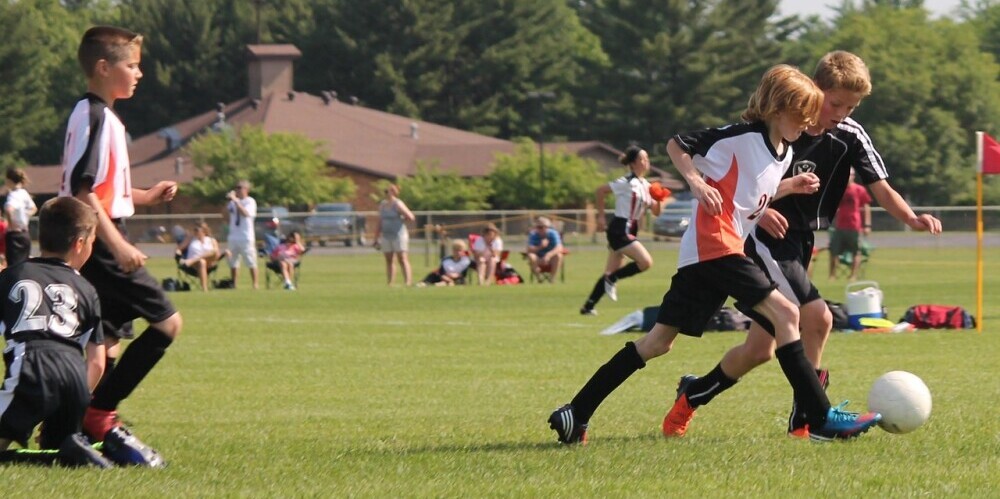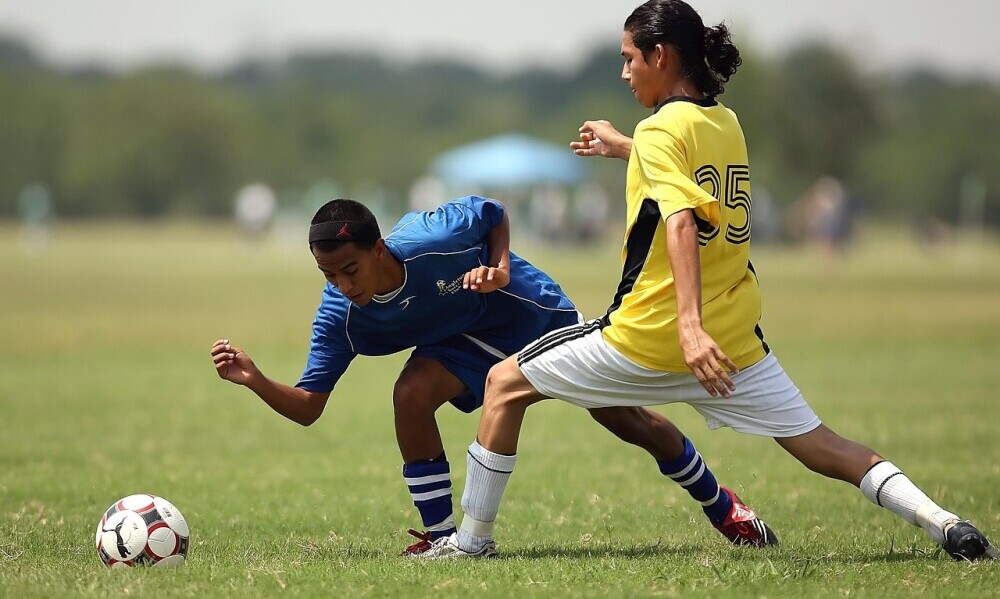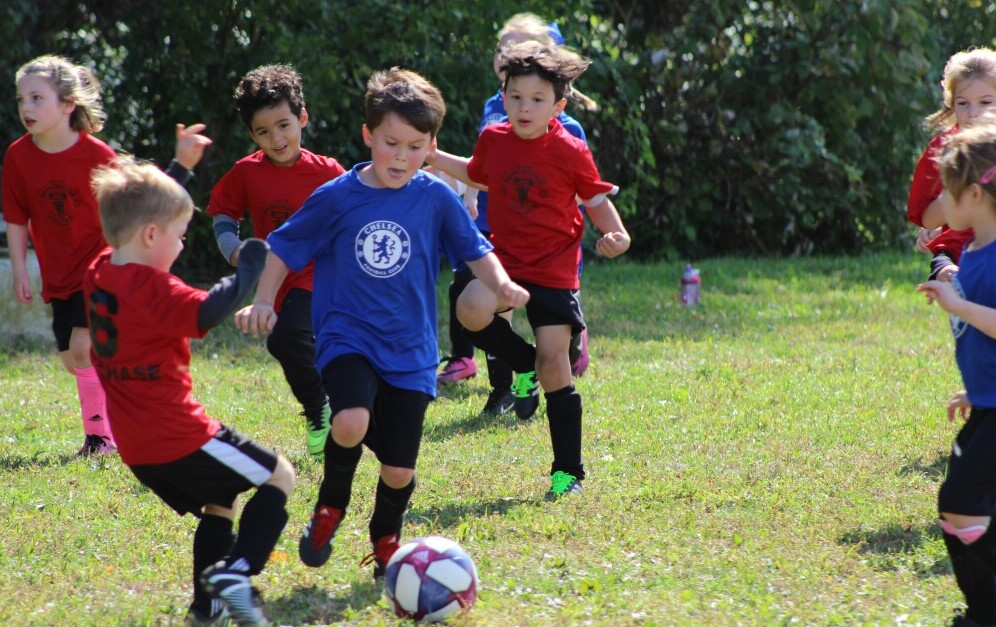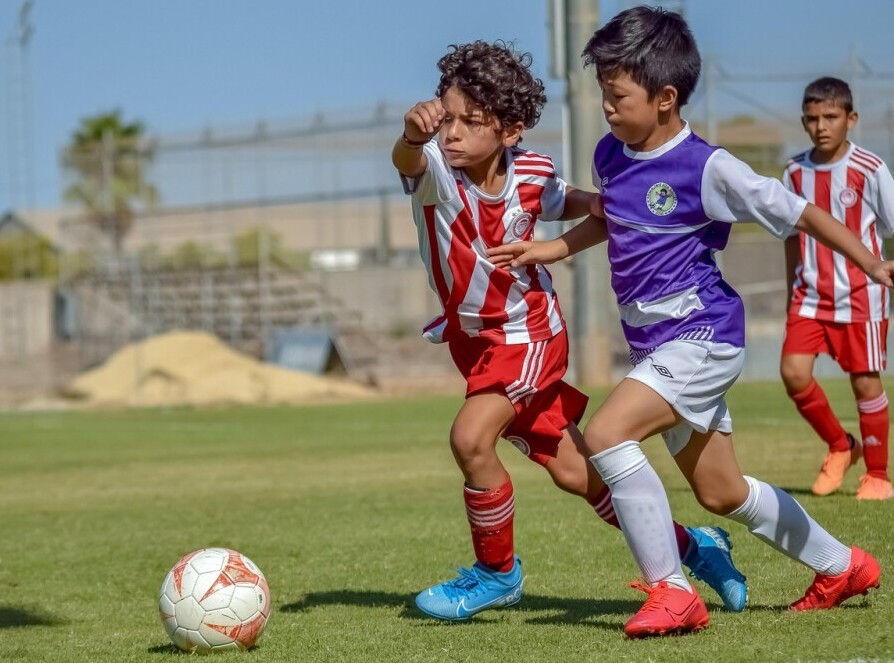Pressing in soccer is one of those things that seems simple but can be pretty complex.
It’s all about applying pressure to the opponent with the ball, trying to win it back quickly.
In today’s fast-paced game, it’s become a staple tactic.
There are different styles of pressing, each with its own flavor.
The high press is when players push up the field to pressure opponents near their goal.
Then there’s the mid-block which is a bit more conservative, sitting in the middle of your half.
And finally, the low block is like parking the bus, defending deep and waiting for the right moment to pounce.
Pressing strategies in soccer have evolved over time.
Remember when teams just sat back and waited?
Not anymore.
From the Dutch total football in the 70s to the gegenpressing we’ve seen in recent years with teams like Liverpool and Manchester City, pressing has transformed the game.
It’s all about forcing errors and taking control.
If young players get a handle on pressing early, they’re set for modern soccer’s demands!
The Developmental Importance of Teaching Pressing to Young Players
Teaching young soccer players how to press is more than just a tactic—it’s a cornerstone for their overall development on the field.
Pressing skills aren’t isolated; they tie directly into how well a player reads the game and makes decisions.
When kids learn to press, they’re also learning to evaluate situations quickly and react appropriately—these cognitive skills are invaluable.
But pressing’s benefits aren’t just physical or mental. It plays a huge role in teaching teamwork and communication.
After all, a successful press relies on players working together in unison.
When young players press as a team, they learn to trust each other and communicate effectively, boosting their confidence and friendship.
Then there’s the psychological side of things. Being part of a cohesive pressing unit can really help kids develop resilience.
When young athletes learn to pick themselves up after a failed press attempt and try again, they’re building that tough mental grit that’s crucial in sports and life.
Incorporating pressing into a young player’s training regime isn’t just about preparing them for matches; it’s about shaping well-rounded athletes.
By focusing on the broad spectrum of skills developed through pressing, coaches can ensure that players grow up with strong foundations that serve them both on and off the pitch.
Age-Appropriate Techniques for Introducing Pressing
Introducing the concept of pressing to young soccer players calls for age-tailored approaches.
Kids at different stages require methods that fit their developing skills and mental maturity.
This means adjusting exercises and drills to match their level while keeping things lively and engaging.
For the youngest players, it’s all about making pressing a natural part of the game through fun drills.
Think tag games or small-sided matches where pressing is the aim. This way, they learn without realizing they’re picking up tactical skills.
As players get a bit older, the training can become more structured.
Incorporating clear objectives in drills, like winning the ball back within six seconds, helps build a tactical understanding.
Focus should also be on developing physical fitness so they can maintain an intense press for longer stretches.
It’s important to keep the fun factor alive for all age groups.
Creative drills that mimic game scenarios and add a competitive edge can be just the trick.
Remember, if the kids enjoy the process, they’re more likely to embrace the techniques fully.
By gearing training sessions to the player’s age, coaches can ensure that young athletes are not overwhelmed.
Instead, they gradually build pressing skills, preparing them for the tactical nuances of the game as they grow.
Training Sessions: Structuring an Effective Pressing Drill
Crafting a training session centered around pressing is about breaking it down into digestible bites.
A good session starts with a clear focus—what particular aspect of pressing are you honing today?
Whether it’s closing down space quickly or coordinating with teammates, sticking to a single theme keeps things simple and effective.
A step-by-step drill can kick off with a warm-up of light passing to get everyone moving.
Then, dive into exercises that mimic game play. Small-sided games are ideal since they put players in realistic situations where pressing decisions are made.
Highlight the transition from offense to defense.
Too often, young players focus all their energy on attacking and forget the defensive switch.
Design drills that emphasize this flip, encouraging them to respond swiftly when possession is lost.
Encourage players to understand the when, where, and how of pressing.
Instead of just chasing the ball, they should strategize who to press and which angle to approach from.
This way, they learn to think like chess players on the field, anticipating moves before they happen.
Keep it dynamic, with match-like tempo and intensity. Let players experience the adrenaline of a real game scenario so they can translate their training into on-field confidence.
An effective session ends with a rundown of what was learned, reinforcing concepts and boosting players’ confidence in their growing tactical knowledge.
Analysis and Feedback: Measuring Success in Teaching Pressing
Giving feedback isn’t just about pointing out mistakes—it’s about guiding players on a learning curve.
Video analysis becomes a fantastic tool here. It helps players see themselves in action, offering a clear picture of what’s working and what needs tweaking.
When using video, show clips of successful pressing moments and not-so-great ones too.
Let players compare and identify the differences. This visual learning can enhance their understanding tenfold since they often grasp concepts quicker than through verbal explanation alone.
Providing feedback should be a balanced act of constructive criticism and positive reinforcement.
Commend them for effective pressing maneuvers, then gently correct areas that need improvement.
Young players thrive on encouragement, and when they know you’re rooting for them, they’ll push harder.
It’s key to acknowledge every small victory, whether it’s a player making the right pressing decision or simply showing improvement in their understanding.
Celebrating these successes keeps morale high and encourages players to keep refining their pressing skills.
When players feel their progress is recognized, it boosts their confidence significantly, helping them maintain motivation to practice and improve even further.
As they see their tactical awareness and execution grow, so does their passion and commitment to the sport.
Long-term Player Development: Beyond Pressing Techniques
Pressing is a key part of the game, but soccer’s a complex dance of skills and tactics.
As young players get a handle on pressing, it’s crucial to integrate it with a rounded soccer education.
Kids need to grow into adaptable players, capable of shifting tactics based on the flow of the match.
Building on pressing skills, training should expose them to various formations and playing styles.
This broadens their tactical toolkit, keeping them flexible and prepared for any scenario the game throws at them.
Encourage young players to always seek learning opportunities beyond just practice.
Watching professional games with a tactical eye can shed light on different pressing styles and team dynamics.
This kind of exposure helps them build a deeper understanding of how pressing fits into larger game strategies.
As these young athletes advance, preparing them for higher levels means nurturing not just their tactical understanding but their physical fitness and mental resilience.
These elements work hand in hand, shaping them into well-rounded players ready to tackle advanced pressures.
Pressing is just the start.
It’s about giving them a foundation that combines individual skill with team tactics, shaping them into versatile players who understand the beauty and intricacies of the game.
With solid grounding and varied experiences, they’ll be equipped not just to compete, but to shine on the field.
Happy soccer season!!!!!!!!!!!
” Here’s a little transparency: Our website contains affiliate links. This means if you click and make a purchase, we may receive a small commission. Don’t worry, there’s no extra cost to you. It’s a simple way you can support our mission to bring you quality content.”







4 Responses
Teaching pressing to young soccer players is such an important skill for modern football! I love how the article breaks it down into age-appropriate techniques and emphasizes teamwork and communication. For younger players, incorporating pressing into fun drills like tag games is a great idea. I’m curious—how do you balance teaching tactical concepts like pressing without overwhelming kids who are just starting out? Also, using video analysis for feedback sounds effective, but do you find it works better for older players who can process the visuals more easily? Would love to hear how coaches keep pressing drills engaging while building resilience and tactical awareness!
Thank you Marco for your great insights.
You’re absolutely right—teaching pressing in a fun and age-appropriate way is key to keeping young players engaged while building their understanding of the game.
To balance tactical concepts without overwhelming beginners, I focus on progressive learning. Starting with simple cues like “chase the ball after losing it” in small-sided games helps them grasp pressing naturally before introducing more structured tactics.
Games like “sharks and minnows” or variations of tag keep it fun while reinforcing the habit of quick defensive reactions.
Regarding video analysis, I’ve found it works best for older players who can process visual feedback more effectively, but even younger players can benefit if the clips are kept short and highlight one clear takeaway at a time.
For example, showing a quick replay of a successful press and asking, “What did we do well here?” helps reinforce learning without making it too complex.
Keeping pressing drills engaging comes down to game-like scenarios and positive reinforcement. Instead of repetitive drills, I create small challenges—like rewarding a team for regaining possession in under five seconds. This keeps motivation high while developing both resilience and tactical awareness.
Thanks again for sharing your thoughts.
Hello!
This article is a fantastic resource for coaches and parents looking to teach young soccer players the art of pressing! I love how it emphasizes developmentally appropriate techniques and the importance of instilling game awareness at an early age.
One thing I’ve noticed with younger players is that they sometimes struggle with positioning while pressing—do you have any specific drills or games that reinforce spacing and anticipation? Also, how do you balance teaching aggressive pressing without overcommitting and leaving gaps in the defense? Would love to hear your thoughts!
Angela M 🙂
Hi Angela,
Thank you for your thoughtful comment!
I’m glad you found the article useful. Positioning while pressing can definitely be a challenge for young players, but incorporating simple, engaging drills can help reinforce spacing and anticipation.
One effective drill is the 3v3 Pressing Grid—set up a small grid and have three defenders press against three attackers who try to pass the ball around.
The goal for the defenders is to work as a unit, cutting off passing lanes rather than just chasing the ball.
This helps players understand angles, spacing, and when to step in or hold back.
To balance aggressive pressing without leaving gaps, I like using the Jockey & Delay Drill—teaching players to press with controlled aggression rather than diving in too quickly.
Encouraging them to ‘guide’ attackers into less dangerous areas instead of immediately lunging for the ball helps build defensive discipline.
It’s all about reinforcing patience, teamwork, and decision-making in real-game scenarios.
Let me know if you’d like more detailed breakdowns of these drills!